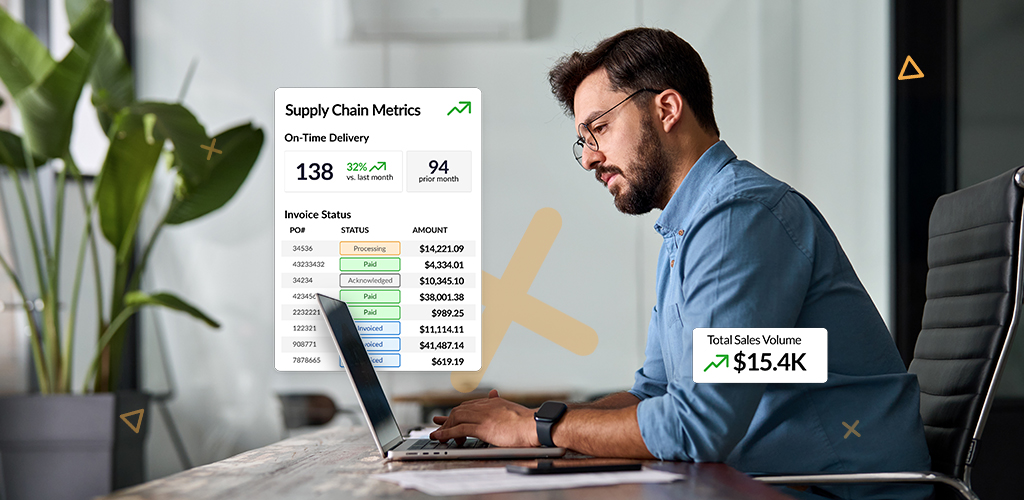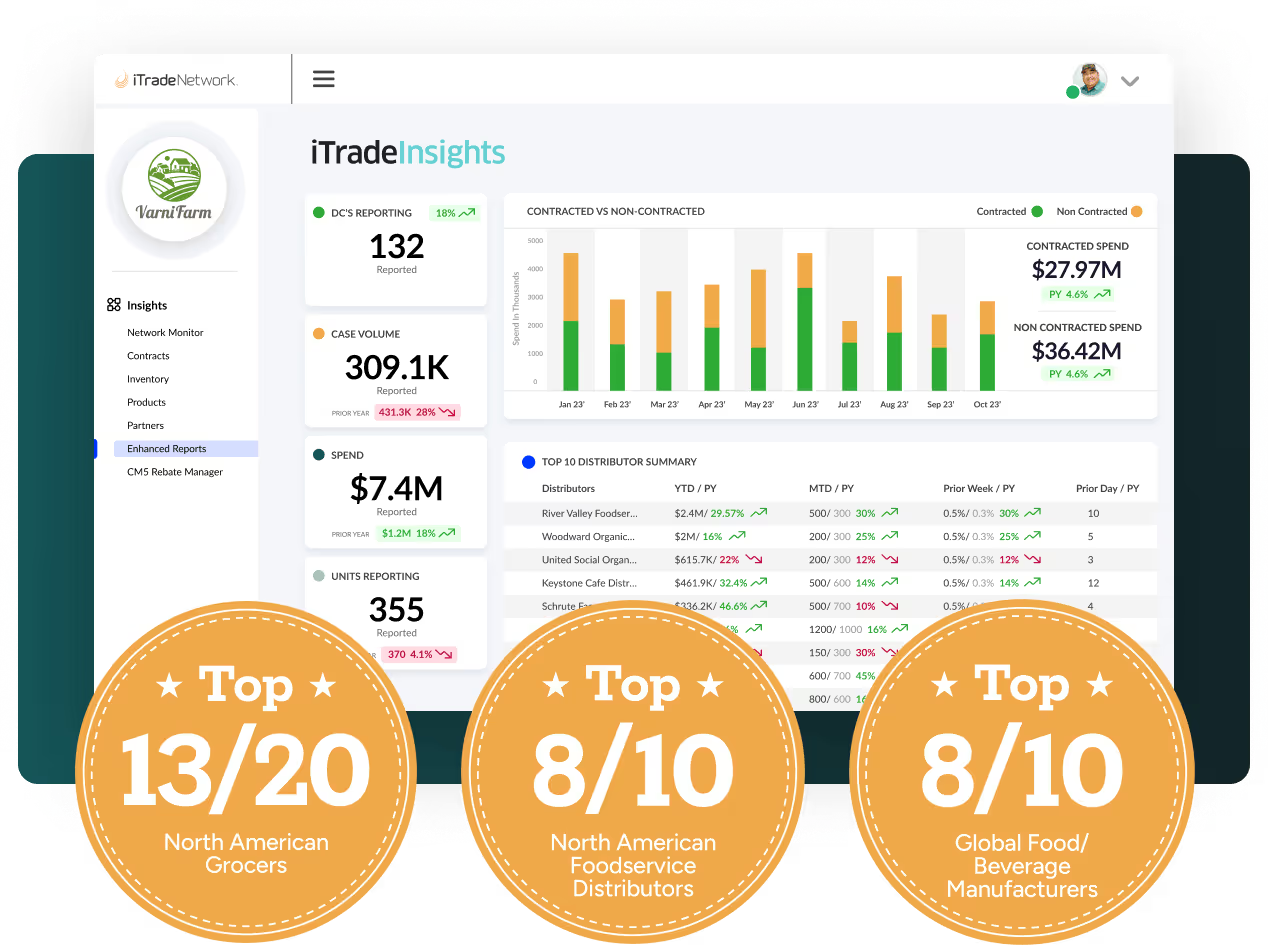Why Trade Spend Optimization Is a Strategic Imperative for Today’s C-Suite

Trade spend—the financial incentives extended to distributors, retailers, GPOs, and operators—often ranks as the second-largest expense after cost of goods sold (COGS). Yet, for many organizations, it remains a fragmented, manual process lacking oversight and measurable ROI.
In today’s margin-compressed environment, unmanaged trade spend is more than an inefficiency—it’s a risk to growth, profitability, and strategic agility. For executive leaders, the question is no longer whether to modernize trade spend—but how fast.
What’s at Stake: Millions in Recoverable Margin
Industry data shows that poorly managed trade spend results in 3–8% annual margin leakage, driven by misaligned contracts, unverified rebates, and slow reconciliation cycles. For mid-market distributors and manufacturers, this translates into millions in unrealized profit and working capital left on the table.
This isn’t just a finance problem—it’s a C-suite opportunity to unlock capital, accelerate decision velocity, and redirect spend toward high-impact growth initiatives.
Why Most Companies Are Leaving Millions on the Table
Despite its scale and strategic importance, trade spend management is still hampered by legacy processes and visibility gaps:
1. Siloed Data and Manual Reconciliation
Spreadsheets and email still dominate reconciliation workflows, creating blind spots across invoices, contracts, and deductions. The result? Delayed accruals, missed claims, and underreported leakage.
2. Contract Complexity Without Safeguards
Trade agreements are layered with custom terms, conditional rebates, and bundled pricing. Without automated validation, companies risk overpayments, compliance exposure, and audit vulnerabilities. One enterprise uncovered $2M in rebate errors during a standard audit.
3. Inefficient Workflows that Erode Speed
Finance teams report spending 8–10 hours weekly per team reconciling invoices to trade terms. These lags ripple across cash flow forecasting and distort performance data at the executive level.
4. Spend Decisions Without ROI Visibility
In the absence of predictive insights, trade spend is allocated reactively, not strategically—undermining potential returns and hindering the ability to pivot based on performance.
Turning Trade Spend Into a Strategic Growth Lever
Forward-looking organizations are embedding AI and automation into trade spend operations—transforming it from a compliance task into a source of competitive advantage. Here’s how:
Real-Time Visibility and Predictive Insights
Modern platforms surface spend anomalies, underperforming promotions, and rebate ROI—before the books close. Leadership teams no longer rely on retrospective reports but act on daily, AI-powered intelligence.
Companies report a 30%+ reduction in pricing and invoice errors within 90 days of implementing automated validation workflows—unlocking significant margin and audit benefits.
Built-In Compliance and Contract Intelligence
Automated validation of trade terms ensures accurate claim handling and reduces exposure to unauthorized deductions. AI-based audit trails and rebate matching reduce friction with partners while increasing financial transparency.
Automating the Reconciliation Bottleneck
Thousands of claims and validations can now be handled autonomously each month—cutting reconciliation time by up to 75%, and reducing manual exceptions by 80%. This shifts finance resources from processing to strategic planning.
Smarter Allocation with AI-Driven Decision Support
An AI insights engine delivers over 3,500 predictive signals monthly, enabling executives to make faster, smarter decisions about supplier performance, deal value, and trade investment optimization.
The Cost of Inaction
Organizations that delay modernizing their trade spend practices are exposed to growing financial inefficiencies, regulatory risk, and slower market responsiveness. Trade spend blind spots distort planning cycles and erode supplier trust—two liabilities no executive team can afford in a volatile market.
What C-Suite Leaders Should Do Now
Trade spend optimization starts at the top. Executives can initiate transformation by:
- Commissioning a Trade Spend Assessment
Identify leakage points, audit exposure, and unrealized rebate opportunities. - Investing in AI-Driven Automation
Automate claim validation, deduction matching, and rebate tracking at scale. - Enabling Strategic Insight Access
Provide finance and procurement leaders with role-based dashboards and anomaly detection. - Aligning Spend with Performance
Use predictive models to shift resources from low-yield programs to growth-driving initiatives.
Executive Takeaway
Trade spend optimization is no longer a tactical improvement—it’s a strategic initiative. When automated, visible, and performance-linked, it becomes a lever for unlocking capital, boosting margins, and accelerating growth.
Leadership teams that act now won’t just cut costs—they’ll gain a durable advantage in efficiency, resilience, and financial agility.
Speak to an Expert
Take a closer look at the platform built for buyers and their trading partners

Why Trade Spend Optimization Is a Strategic Imperative for Today’s C-Suite
Trade spend—the financial incentives extended to distributors, retailers, GPOs, and operators—often ranks as the second-largest expense after cost of goods sold (COGS). Yet, for many organizations, it remains a fragmented, manual process lacking oversight and measurable ROI.
In today’s margin-compressed environment, unmanaged trade spend is more than an inefficiency—it’s a risk to growth, profitability, and strategic agility. For executive leaders, the question is no longer whether to modernize trade spend—but how fast.
What’s at Stake: Millions in Recoverable Margin
Industry data shows that poorly managed trade spend results in 3–8% annual margin leakage, driven by misaligned contracts, unverified rebates, and slow reconciliation cycles. For mid-market distributors and manufacturers, this translates into millions in unrealized profit and working capital left on the table.
This isn’t just a finance problem—it’s a C-suite opportunity to unlock capital, accelerate decision velocity, and redirect spend toward high-impact growth initiatives.
Why Most Companies Are Leaving Millions on the Table
Despite its scale and strategic importance, trade spend management is still hampered by legacy processes and visibility gaps:
1. Siloed Data and Manual Reconciliation
Spreadsheets and email still dominate reconciliation workflows, creating blind spots across invoices, contracts, and deductions. The result? Delayed accruals, missed claims, and underreported leakage.
2. Contract Complexity Without Safeguards
Trade agreements are layered with custom terms, conditional rebates, and bundled pricing. Without automated validation, companies risk overpayments, compliance exposure, and audit vulnerabilities. One enterprise uncovered $2M in rebate errors during a standard audit.
3. Inefficient Workflows that Erode Speed
Finance teams report spending 8–10 hours weekly per team reconciling invoices to trade terms. These lags ripple across cash flow forecasting and distort performance data at the executive level.
4. Spend Decisions Without ROI Visibility
In the absence of predictive insights, trade spend is allocated reactively, not strategically—undermining potential returns and hindering the ability to pivot based on performance.
Turning Trade Spend Into a Strategic Growth Lever
Forward-looking organizations are embedding AI and automation into trade spend operations—transforming it from a compliance task into a source of competitive advantage. Here’s how:
Real-Time Visibility and Predictive Insights
Modern platforms surface spend anomalies, underperforming promotions, and rebate ROI—before the books close. Leadership teams no longer rely on retrospective reports but act on daily, AI-powered intelligence.
Companies report a 30%+ reduction in pricing and invoice errors within 90 days of implementing automated validation workflows—unlocking significant margin and audit benefits.
Built-In Compliance and Contract Intelligence
Automated validation of trade terms ensures accurate claim handling and reduces exposure to unauthorized deductions. AI-based audit trails and rebate matching reduce friction with partners while increasing financial transparency.
Automating the Reconciliation Bottleneck
Thousands of claims and validations can now be handled autonomously each month—cutting reconciliation time by up to 75%, and reducing manual exceptions by 80%. This shifts finance resources from processing to strategic planning.
Smarter Allocation with AI-Driven Decision Support
An AI insights engine delivers over 3,500 predictive signals monthly, enabling executives to make faster, smarter decisions about supplier performance, deal value, and trade investment optimization.
The Cost of Inaction
Organizations that delay modernizing their trade spend practices are exposed to growing financial inefficiencies, regulatory risk, and slower market responsiveness. Trade spend blind spots distort planning cycles and erode supplier trust—two liabilities no executive team can afford in a volatile market.
What C-Suite Leaders Should Do Now
Trade spend optimization starts at the top. Executives can initiate transformation by:
- Commissioning a Trade Spend Assessment
Identify leakage points, audit exposure, and unrealized rebate opportunities. - Investing in AI-Driven Automation
Automate claim validation, deduction matching, and rebate tracking at scale. - Enabling Strategic Insight Access
Provide finance and procurement leaders with role-based dashboards and anomaly detection. - Aligning Spend with Performance
Use predictive models to shift resources from low-yield programs to growth-driving initiatives.
Executive Takeaway
Trade spend optimization is no longer a tactical improvement—it’s a strategic initiative. When automated, visible, and performance-linked, it becomes a lever for unlocking capital, boosting margins, and accelerating growth.
Leadership teams that act now won’t just cut costs—they’ll gain a durable advantage in efficiency, resilience, and financial agility.
Unlock It Now!




